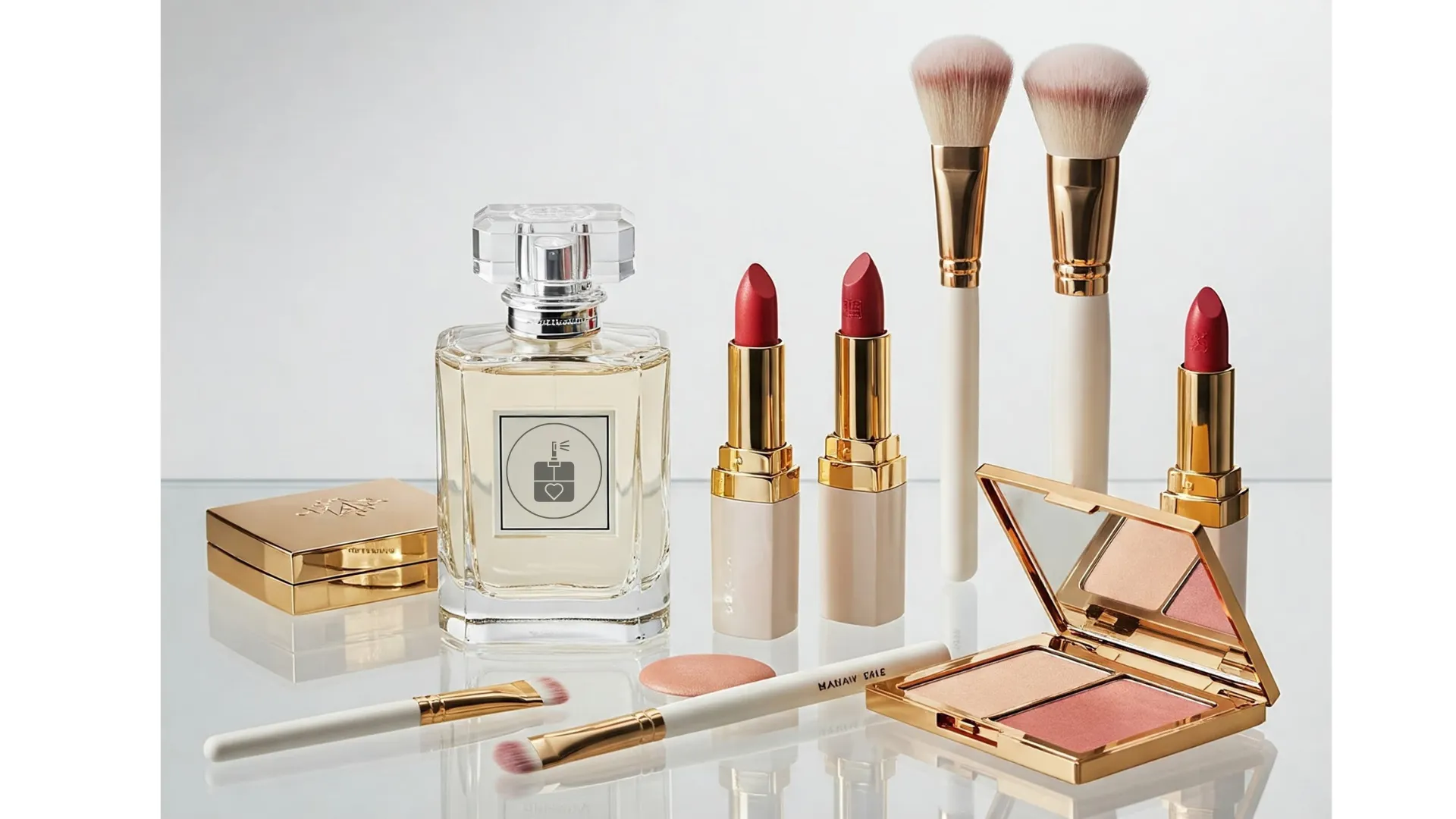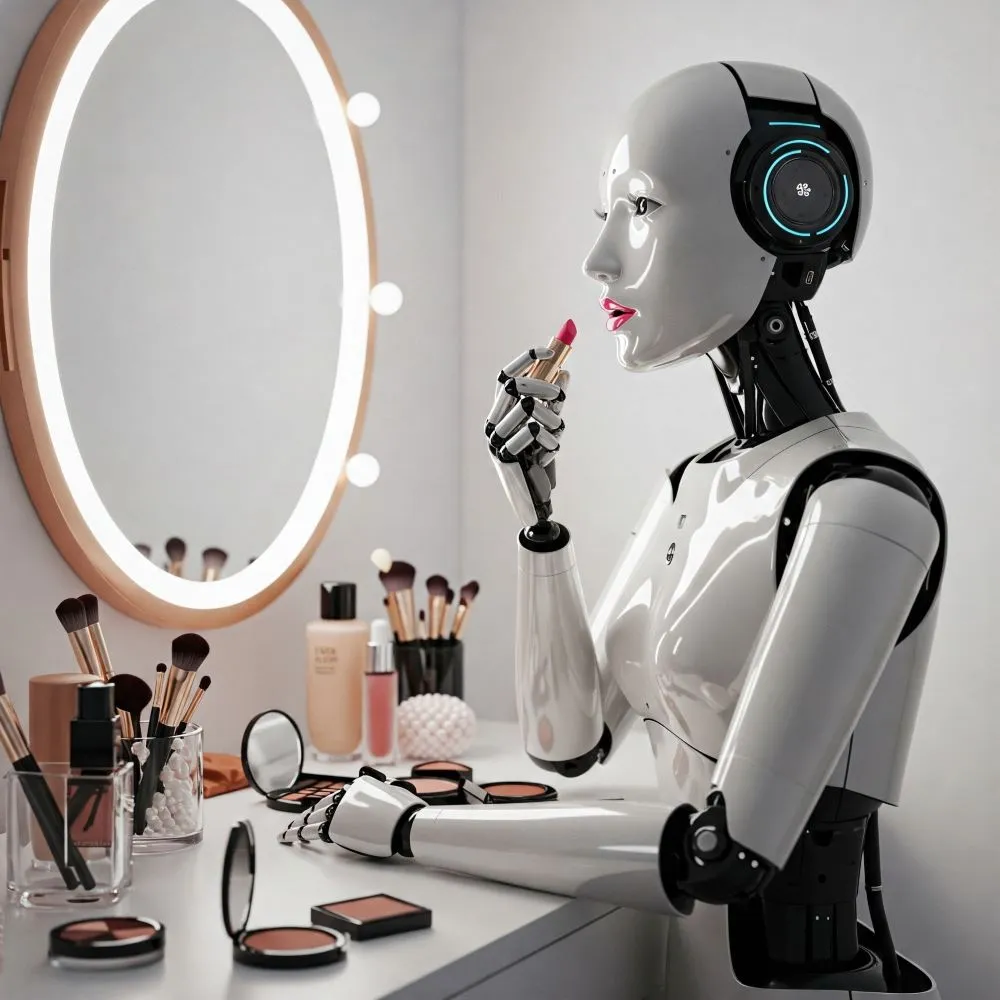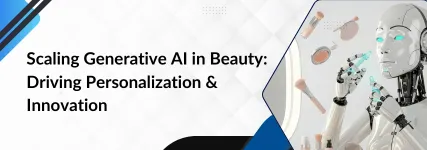The phrase “beauty is in the eye of the beholder” is giving way to a new reality: beauty is now at the fingertips of generative AI (gen AI) prompters. According to McKinsey Insights, Gen AI has the potential to contribute $9 billion to $10 billion to the global economy through its transformative impact on the beauty industry. Early adopters of this technology are already experimenting, but scaling these innovations presents challenges. Those who manage to scale gen AI effectively will secure a significant competitive edge, leaving others struggling to maintain market share.
To fully harness gen AI’s potential, beauty players must focus on key use cases and tailor the technology to their specific needs. This article, inspired by McKinsey’s insights, explores four high-impact use cases, strategies for organizational integration, and long-term imperatives for sustaining gen AI in the beauty sector.
Four Transformative Use Cases for Gen AI in Beauty
The beauty industry thrives on rapid innovation and responsiveness to consumer feedback. Gen AI offers numerous applications across business functions, but four stand out for their potential to revolutionise the sector:
1. Hyperpersonalised Targeting
In the beauty industry, a unique value proposition is crucial for standing out in a competitive market. However, traditional methods limit companies to targeting a few broad consumer segments. Gen AI changes the game by enabling Hyperpersonalised marketing that can improve conversion rates by up to 40%.
Gen AI analyses vast consumer data sets to identify microsegments and craft tailored messages. For example, instead of sending a generic promotional message, gen AI could send Camille—a hypothetical consumer in France who recently purchased sunscreen—a personalized text: “Bonjour, Camille! Our special cleansing foam for sunscreen removal is now 20% off. Pair it with your recent purchase for the best results.”
Marketing specialists must review AI-generated messages to ensure alignment with brand values and avoid unintended connotations. By integrating gen AI with digital asset management (DAM) systems and campaign tools, beauty brands can streamline creative asset categorization and free up teams to focus on strategic tasks.
2. Experiential Product Discovery
The consumer journey for discovering beauty products is ripe for improvement. First-generation chatbots and virtual try-ons often fail to provide engaging or accurate experiences. Gen-AI-powered chatbots, trained on extensive product data and consumer preferences, offer more personalised recommendations, improving conversion rates by up to 20%.
Virtual try-ons could also be enhanced. Using image-generating gen AI, consumers could visualise products on their skin in various settings or simulate long-term effects, such as a spot-lightening serum’s impact over months. Gen AI can even personalise in-store experiences. For instance, when a shopper enters a store with location services enabled, Gen AI could generate customized content based on their profile and purchase history.

3. Rapid Packaging-Concept Development
Packaging is a critical aspect of consumer perception. Traditional processes for developing branding and packaging take months and involve multiple stakeholders. Gen AI can dramatically accelerate this timeline by generating initial concepts based on prompts like, Design eco-friendly packaging for a nighttime moisturizer emphasizing anti-ageing benefits.
These concepts can then be refined using consumer feedback from focus groups or online engagement metrics. One beverage company leveraged this approach to reduce concept development time by 60%.
4. Innovative Product Development
Developing new beauty formulas is a time-intensive process requiring rigorous testing for safety, stability, and efficacy. Gen AI can streamline this by analysing data such as product patents, clinical test results, and raw material usage to recommend ingredient combinations and formulas.
For instance, a formulation scientist could use gen AI to create a cost-effective nighttime moisturizer featuring neuropeptides for anti-ageing benefits. While physical testing remains essential, gen AI significantly reduces research time, enabling quicker product launches and cost savings of up to 5% on raw materials.
Strategies for Integrating Gen AI
Scaling Gen AI requires strategic decisions about technology adoption. Beauty players can choose from three approaches:
- Taker Approach This involves integrating off-the-shelf Gen AI solutions with minimal customization. It’s cost-effective and suitable for brands with limited consumer data or technical resources. Key considerations include data privacy, copyright ownership, and integration capabilities. Piloting the tool is essential to evaluate its effectiveness.
- Shaper Approach In this model, companies customize third-party gen AI platforms using proprietary data. For example, brands can train models on demographic data, brand voice, and past campaigns to improve Hyperpersonalised targeting. While resource-intensive, this approach suits larger beauty players with abundant data and technical expertise.
- Maker Approach Building proprietary gen AI models from scratch is rarely feasible for beauty companies due to high costs and resource requirements. Instead, a hybrid approach combining taker and shaper strategies often delivers the best results. Modular Gen AI components allow for easier scaling and switching between providers.

Implementing Gen AI at Scale
Successfully integrating gen AI into an organization involves four critical steps:
- Align Leadership on Vision and Value Executives must identify high-impact use cases, such as Hyperpersonalised targeting or innovative product development, and quantify their potential benefits. Cross-functional collaboration is essential to shape a clear road map for scaling Gen AI.
Long-Term Imperatives
Integrating Gen AI is more than a technological upgrade; it’s a transformation that requires sustained effort and innovation. By aligning leadership, investing in capabilities, and maintaining a human-centric approach, beauty players can unlock gen AI’s full potential.
At Bluetick Consultants, we offer a diverse range of AI development services specifically designed to meet your business objectives, with a strong emphasis on generative AI technology. Our services include:
- Generative AI Product Development and Experience Design
- AI Chatbots and Virtual Assistants
- LLM Engineering and Fine-Tuning
- AI Workflows and Agent Development
- Machine Learning and Deep Learning Models
This article draws inspiration and insights from McKinsey’s report on generative AI in the beauty industry. For the original article, visit McKinsey Insights.
